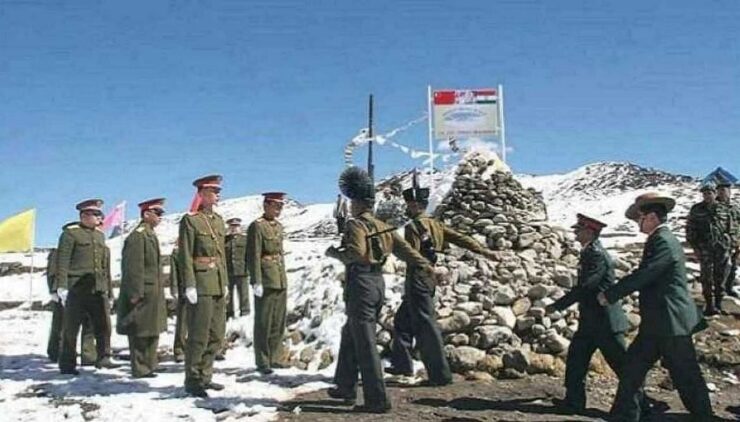
New Delhi: Even as the 14th round of Corps Commander level talks between India and China on January 12, was deadlocked without any agreement, the two sides agreeing to meet soon was taken as a step in the positive direction.
The talks taking place in the backdrop of China maintaining an aggressive posture by announcing that it had standardised in Chinese characters, Tibetan and Roman alphabet the names of 15 places in Zangnan, the Chinese name for Arunachal Pradesh. China said that standardisation is in accordance with regulations on geographical names issued by the State Council, China’s cabinet.
Besides renaming places in Arunachal Pradesh, the Chinese embassy sent stern letters to Indian parliamentarians for attending a reception hosted by the Tibetan Parliament-in-exile last month and building a bridge on Pangong Tso in an area that India says is illegally occupied.
However, these appear to have not hampered the talks held on the Chinese side of the Chushul-Moldo Border Personnel Meeting point and the two sides issuing a joint statement on January 13 stating they would consolidate earlier outcomes and stay in close contact. It brings relief from the last round of talks in October, which had ended in a stalemate. There was no joint statement, and the two sides had issued independent statements blaming each other for the situation.
The joint statement mentioned that “representatives from the defence and foreign affairs establishments of the two sides were present at the meeting” and they had “a frank and in-depth exchange of views for the resolution of the relevant issues” along the Line of Actual Control in the Western Sector.
Both sides “also agreed to consolidate on the previous outcomes and take effective efforts to maintain the security and stability on the ground in the Western Sector including during winter” and to “stay in close contact and maintain dialogue via military and diplomatic channels and work out a mutually acceptable resolution of the remaining issues at the earliest” the statement said. It mentioned that in “this context it was also agreed that the next round of the Commanders’ talks should be held at the earliest”.
The statement goes on to say that it was “agreed that both sides should follow the guidance provided by the State Leaders and work for the resolution of the remaining issues at the earliest. It was noted that this would help in restoration of peace and tranquillity along the LAC in the Western Sector and enable progress in bilateral relations.”
The Indian delegation was led by Lt Gen Anindya Sengupta, who had taken over as the commander of the Leh-based XIV Corps last week. For China, Maj Gen Yang Lin, commander of South Xinjiang Military district led the delegation. It was the first time that the two officers were leading the negotiations for their respective sides.
The delegations from both sides also included officials from their foreign ministries, as has been happening so far.
However, Chinese Foreign Ministry appeared none too happy over the remarks by the Army Chief General M.M. Naravane’s statement at his annual media conference ahead of Army Day with the spokesperson Wang Wenbin stating on January 13 that “at present” the two countries are “in dialogue and communication through diplomatic and military channels to ease the situation at the border” and added, “we hope that certain individual on the Indian side would refrain from making unconstructive remarks.”
General Naravane had expressed hope for resolution of PP15 (Hot Springs). Once that is done, he said, “we will go on to the other issues which pre-date the current standoff, we are hopeful that too will get resolved from time to time.”
The two other unresolved points are Depsang Plains, where Chinese troops are blocking Indian soldiers from accessing their five traditional patrolling points; and Demchok, where some so-called civilians have pitched tents on the Indian side of the Line of Actual Control.
However, the Army Chief had stated that “while we say that, while there has been partial disengagement, the threat has in no way reduced.”
Gen Naravane described the 14th round of talks as a “good thing” as it shows “that we can resolve our differences through dialogue, and that is why this mechanism is very important”. Calling it “unreasonable” to expect an outcome after every round of discussions, he said that a “number of rounds will be required to deal with this situation and resolve them, one at a time.”
The eventual de-escalation, and de-induction of troops from the region can only happen after a certain amount of trust is built between the two sides based on disengagement from the friction areas, Gen Naravane had said.
Since the standoff began in May 2020, the two sides disengaged from PP14 in Galwan Valley in June 2020, from north and south banks of Pangong Tso and Kailash heights in Chushul sub-sector in February 2021, and from PP17A in Gogra Post in August.








